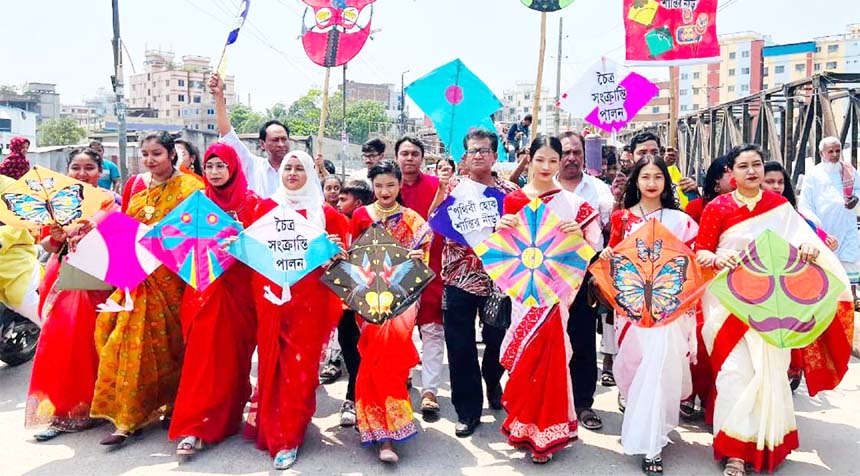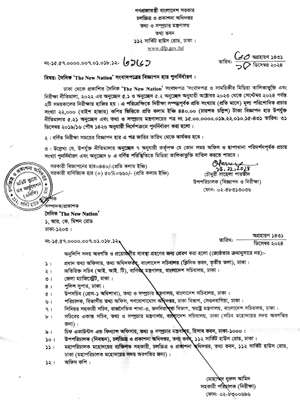Staff Reporter :
The nation is poised to usher in the Bangla New Year 1432 today with Pahela Baishakh celebrations, marked by vibrant cultural programmes, inclusive participation, and a renewed spirit of harmony.
For the first time, the government has launched a two-day celebration encompassing both Chaitra Sangkranti and Pahela Baishakh, highlighting the country’s commitment to unity across its diverse communities.
Citizens from all walks of life-including ethnic minorities-are expected to take part in the festivities, reflecting a rich blend of tradition and national pride.
In the capital Dhaka, celebrations will reach their peak. The day will commence at dawn with the national anthem followed by Rabindranath Tagore’s timeless song “Esho He Boishakh, Esho Esho.”
At Ramna Batamul, the renowned cultural group Chhayanaut will host its signature musical performance, while the Faculty of Fine Arts at Dhaka University will lead its much-anticipated “Barshobaran Ananda Shobhajatra” procession at 9 am.
This year’s parade will feature even greater diversity, with participation from Chakma, Marma, Tripura, Garo, and Manipuri communities, as well as female footballers, each proudly showcasing their cultural heritage.
Chief Adviser Professor Muhammad Yunus, speaking at the foundation-laying ceremony of Sampriti Bhaban, emphasised that Pahela Baishakh serves as a powerful symbol of unity. “Everyone will celebrate in their own way, according to their customs and traditions. Despite our differences, we are one family,” he stated.
The event, hosted by the Bangladesh Buddhist Federation, saw Professor Yunus honouring the historical role of Buddhist monasteries as centres of learning and peace.
Drawing inspiration from the teachings of Gautama Buddha, he called for a spirit of compassion, inclusivity, and equality-values that resonate deeply with the ethos of the New Year celebration.
Festivities are set to unfold across the nation, from rural unions to bustling urban centres.
Traditional fairs, essay competitions, cultural exhibitions, and stick-fighting displays are among the many events planned. Educational institutions will celebrate in their own unique ways, while major cultural organisations-including Shurer Dhara, Rishij Shilpigoshthi, Bangladesh Nritya Shilpi Sangstha, and Garo cultural troupes-will perform throughout the day.
The Ministry of Information and Broadcasting, in coordination with Bangladesh Shilpakala Academy, is overseeing nationwide media coverage and cultural coordination.
Public and private television channels, radio stations, and community radios will broadcast the festivities live, including a drone show and evening concert at the South Plaza of the Jatiya Sangsad.
Special initiatives have been introduced to ensure the inclusion of all.
Children in orphanages, hospital patients, and inmates will be served traditional meals and treated to cultural programmes. Museums and archaeological sites will be open to the public, offering free entry to children, students, and people with special needs.
Bangladesh’s diplomatic missions abroad are also celebrating Pahela Baishakh, showcasing the culture and heritage of the country to the global community.
Security measures have been heightened across the country. Law enforcement, Fire Service, and Civil Defence personnel are on duty to ensure safety and accessibility. Medical camps have been set up at key venues such as Suhrawardy Udyan and Ramna Park to provide emergency assistance if needed.
Pahela Baishakh, a public holiday, is more than just a festive occasion-it is a celebration of Bangladesh’s cultural mosaic and a powerful expression of unity in diversity.



